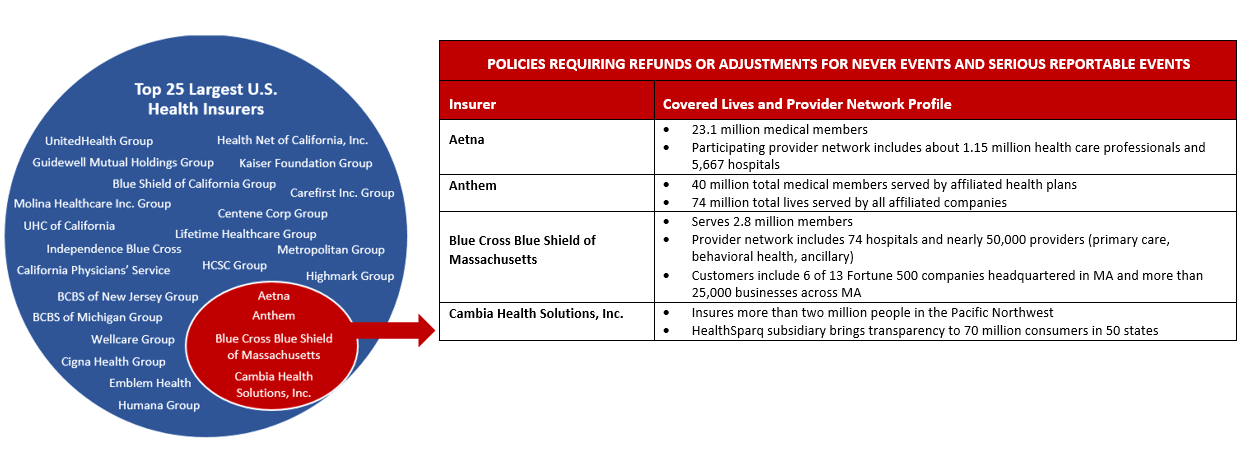Quantros® Value-Based Care Factoid Series
Powered by the world’s largest real-world evidence base on patient safety and healthcare quality, the Quantros Value-based Care Factoid Series provides informative indicators and measures of clinical and financial performance that matter in value-based reimbursement and payment models.
Delivered in partnership with Becker’s Hospital Review, we are confident these research insights and greater transparency will help all stakeholders to accurately measure and benchmark progress on the journey to value-based, higher-quality and safer care. To see the first factoid in the series, click here.
Patient Safety Impacts on Provider Reimbursement and the Revenue Cycle
Nearly all of the top 25 largest U.S. health insurers (by market share) and their respective subsidiaries maintain and enforce policies that deny, adjust, or retract provider reimbursement for treatment costs associated with never events, serious reportable events, or hospital acquired conditions (HACs). Although such policies and procedures vary, four specifically maintain provisions that require hospitals to refund the associated payments received to insurers and patients as claimed or adjusted. Non-reimbursable medical costs per error can range from $810 to $47,099. After factoring in short-term disability and in patient mortality costs, the total cost per error can reach over $93,0001.
Sources:
- Quantros 2017 Patient Safety Impacts on Provider Reimbursement and Revenue Cycle Report
- Aetna Facts
- Anthem Fact Sheet
- Blue Cross Blue Shield of Massachusetts Corporate Fact Sheet
- Cambia Health Solutions Corporate Facts
1Milliman. (2010, June). The Economic Measurement of Medical Errors. Society of Actuaries.


